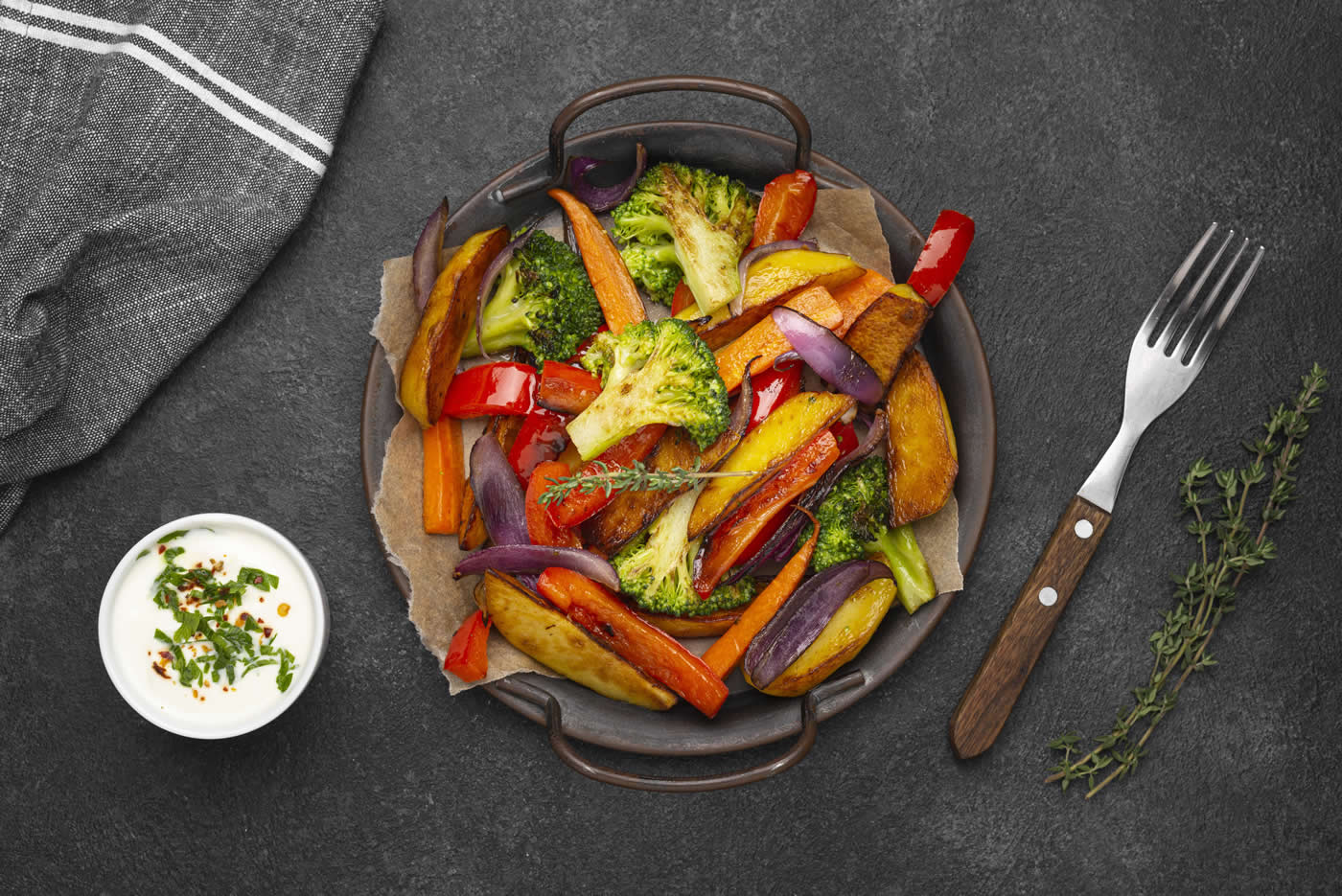With the holiday season behind us, we bid farewell to the joyous celebrations that brought with them an abundance of delicious, albeit indulgent, meals. Thanksgiving, Christmas, and New Year’s Eve are notorious for tempting us with irresistible treats and hearty feasts. However, as the revelry subsides and January dawns, many find themselves eager to embark on a journey of renewal and health and overall post-holiday recovery.
In this article, we will explore strategies to get back on track after holiday overeating, emphasizing the use of healthier, allergen-free, and natural cooking and baking ingredients.
The holiday overeating and the January reset
The festive season’s allure lies in the tantalizing array of rich, calorie-laden dishes that grace our tables. From decadent desserts to savory indulgences, holiday feasting becomes a tradition that often leads to overeating. The celebratory spirit, coupled with a plethora of tempting options, can make it challenging to resist the allure of second servings and sweet treats.
Come January, many of us embark on a journey of renewal, seeking to restore balance to their bodies after the festive indulgence. This often involves adopting healthier eating habits, incorporating nutrient-dense foods, and choosing alternatives that contribute to overall well-being. Utilizing ingredients that prioritize health, such as the ones from FoodGrid, can play a pivotal role in achieving this post-holiday reset.
Choosing healthier alternatives
Getting back on track, or deciding to finally adopt a healthier lifestyle does not have to come with drastic and immediate changes. We are less likely to stick to a healthier routine if it means turning our life upside down overnight. The change should come one step at a time!
Making a small change in our diet can yield significant benefits without requiring a complete overhaul of our culinary preferences. By incorporating healthier ingredients into our favorite dishes, we embark on a journey of improved well-being without sacrificing the enjoyment of the food we love. Substituting traditional ingredients with healthier alternatives, such as opting for organic oils, whole grains, lean proteins, and incorporating a variety of colorful fruits and vegetables, can enhance the nutritional profile of our meals. For example, replacing refined oils with healthy alternatives like coconut oil or using natural sweeteners instead of refined sugars can positively impact our overall health. Also, decorating our sweet treats with natural-colored sprinkles instead of artificial ones can be a great option, because these are not only free from artificial dyes and preservatives, but also have some nutritional value due to the fact that they are colored using natural fruit and vegetable extracts.
This approach not only nourishes the body with essential nutrients but also contributes to sustained energy levels, better digestion, and long-term well-being. The key lies in making these changes gradually and consistently, transforming our favorite recipes into healthier, yet equally delightful, culinary experiences. Ultimately, this mindful shift in our diet can lead to positive lifestyle changes, empowering us to enjoy our meals while prioritizing our health.
Here are some of the healthier alternatives we recommend trying:
Coconut oil: Swap out conventional cooking oils with coconut oil for a healthier alternative. Coconut oil is rich in medium-chain triglycerides (MCTs), which can provide a quick source of energy. Its versatility makes it suitable for various cooking and baking applications, from sautéing vegetables to creating delectable baked goods.
Natural colored sprinkles: Instead of artificial sprinkles loaded with synthetic colors and additives, opt for natural colored sprinkles. These alternatives derive their vibrant hues from plant-based sources, avoiding the artificial additives that can contribute to health concerns. Sprinkle them atop desserts for a visually appealing and guilt-free touch.
Coconut milk: Embrace the creamy goodness of coconut milk instead of traditional dairy products. Coconut milk adds a luscious texture to both sweet and savory dishes, offering a dairy-free alternative rich in vitamins, minerals and healthy fats. It’s an excellent choice for curries, soups and desserts.
Trans fat-free shortening: When baking, opt for trans fat-free shortening to ensure your treats are as heart-healthy as they are delicious. Trans fats, often found in conventional shortenings, have been linked to adverse health effects. Choosing a trans fat-free alternative contributes to a more wholesome and nutritious end product.
Try these recipes for post-holiday wellness!
Coconut oil roasted vegetables: Drizzle your favorite vegetables with melted coconut oil before roasting. The oil’s subtle sweetness complements the natural flavors of the vegetables, creating a nutritious and flavorful side dish.
Healthy coconut milk smoothie: Blend coconut milk with a medley of fresh or frozen fruits to create a refreshing and nutrient-packed smoothie. Add a handful of natural colored sprinkles for a touch of color without compromising on health.
Trans fat-free shortening cookies: Bake your favorite cookies using trans fat-free shortening for a healthier twist. Incorporate natural colored sprinkles into the cookie dough for a visually appealing and delightful treat.
Navigating the post-holiday season need not be a daunting task. By embracing healthier alternatives and incorporating nourishing ingredients like coconut oil, natural colored sprinkles, coconut milk and trans fat-free shortening into our recipes, we can embark on a journey of revitalization. The choices we make in the kitchen contribute not only to our physical well-being but also to the joy of savoring delicious meals guilt-free. As we bid farewell to the holiday excesses, let the wholesome ingredients guide us towards a renewed commitment to health and balance.
